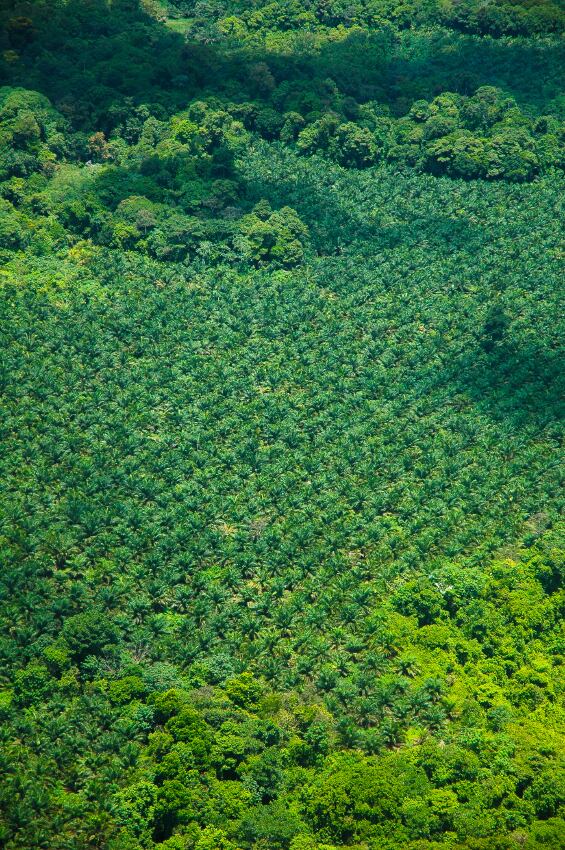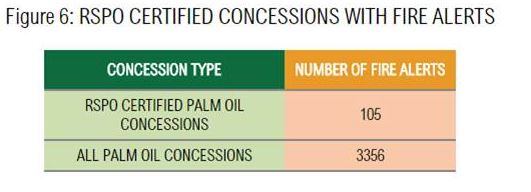Last month Greenpeace Indonesia published photographs of small oil palm saplings planted in neat rows on the burned remains of what was peatland and forest in central Kalimantan, Borneo - an area where no palm oil concessions had been granted, it says. For forest campaigner at Greenpeace Southeast Asia, Annisa Rahmawati, it is unthinkable that people are profitting from the environmental crisis. " [Indonesian] president Jokowi has called for restoration after the fires – and that must mean restoring forests and peatlands, not planting with oil palm.”
The Indonesian Palm Oil Producers Association (GAPKI) responded to the photographs by claiming the industry was the victim of a smear campaign and the planting had been done to damage the image of

Indonesia’s palm oil industry as saplings would not normally be planted on still-smouldering burnt earth.
The issue has become somewhat of a finger-pointing blame game. One of the largest palm plantation owners in Indonesia and Malaysia, Wilmar, issued a statement saying it had not cleared land to expand its Indonesian plantations recently, and had notified its suppliers that any violation of its ‘no burn’ policy would result in immediate termination of business dealings. It also put the blame on smallholder farmers illegally clearing land.
“We recognise that slash-and-burn practices remain rampant among small-scale farmers and local communities. This often leads to uncontrolled fires that may inevitably spread to our plantations or those of our suppliers,” the company said.
According to data from Global Forest Watch (GFW), around 10% of the fires are on palm oil concessions, compared with 25% for pulpwood concessions, with the majority of the fires occurring outside industry concessions.
RSPO performs better
GFW data also shows that out of the 3356 palm concessions with fire alerts, 105 were RSPO-certified.

Susan Minnemayer, product manager for Global Forest Watch Fires told FoodNavigator there were generally fewer fires on RSPO concessions: “I think this is because RSPO [companies] are trying to be more environmentally responsible and are under more pressure.
“Companies like Unilever and international brands are making deforestation commitments and want to buy palm oil from only certified producers. And if these producers have a lot of fires they won’t be able to get certification or they could lose it.”
She added that since RSPO-certified companies have less fire alerts, more certification could be a good step to preventing future fires.
But worryingly, a Greenpeace report claims that palm oil giants with sustainable credentials were fuelling the fires in west and central Kalimantan through deforestation - and then selling this oil to brands boasting their products are sustainable.
“Palm oil from these plantations [responsible for deforestation and peatland drainage where fires subsequently broke out] is supplied to international markets through commodities traders including Wilmar International, Golden Agri Resources and IOI Loders Croklaan. These traders in turn supply palm oil to brands with ‘No Deforestation’ policies,” it says.
A dirty race to the bottom?
There is also the fact that demand for non-RSPO palm oil is strong, and the NGO has criticised the Indonesian government for justifying a race to the bottom by pandering to the fact that China is a willing market for dirty palm oil.
According to the Forest Carbon Partnership, 70% of global tropical deforestation is because of four agricultural commodities — palm oil , soy, beef, and pulp and paper.
Minnemayer confirmed that this demand is significant. “Clearly not all demand is for sustainable palm oil,” she said. “There has been a huge amount of conversion of land for palm oil and a lot of it has happened in protected areas, on drained peatlands and in primary forests.
Tesso Nilo national park, for instance, is one of Indonesia’s last large swathes of lowland tropical forest – and since 2000 around two thirds of tree coverage has been cleared to make way for illegal palm oil plantations and other development, says GFW. Despite being a protected forest, government enforcement is lax.
Action plan
In the short term, the Global Forest Watch Fires platform has developed a tool which helps buyers of palm oil avoid sourcing palm oil from risky areas. Palm oil must be processed in mills soon after being picked or it will rot, and so the tool works by locating mills in ecologically sensitive areas, such as peatlands or primary forests, while satellite data identifies if forests have been cleared or have fires have occurred there.
It also has a fire alert service which allows people to sign up for email or text message alerts for specific areas.
In a more long-term optic, Greenpeace has laid out a four step Fire Action Plan for the Indonesian plantation industry, and is calling on all suppliers to immediately stop forest clearance and peatland development, to suspend trade with any suppliers who continue to do so; reflood critical peatland areas; support the government's One Map initiative by publishing concession maps to continue forest monitoring and fire alerts, and to work with stakeholders to instigate an industry-wide ban on forest clearance and peatland development.
“Within the palm oil industry there needs to be serious consideration as to which lands are sustainable,” said Minnemayer.
